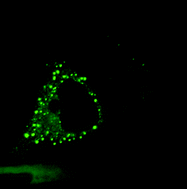Revisiting and revising the purinosome
Abstract
Some metabolic pathway enzymes are known to organize into multi-enzyme complexes for reasons of catalytic efficiency, metabolite channeling, and other advantages of compartmentalization. It has long been an appealing prospect that de novo purine biosynthesis enzymes form such a complex, termed the “purinosome.” Early work characterizing these enzymes garnered scarce but encouraging evidence for its existence. Recent investigations led to the discovery in human cell lines of purinosome bodies—cytoplasmic puncta containing transfected purine biosynthesis enzymes, which were argued to correspond to purinosomes. New discoveries challenge both the functional and physiological relevance of these bodies in favor of protein aggregation.


 Please wait while we load your content...
Please wait while we load your content...